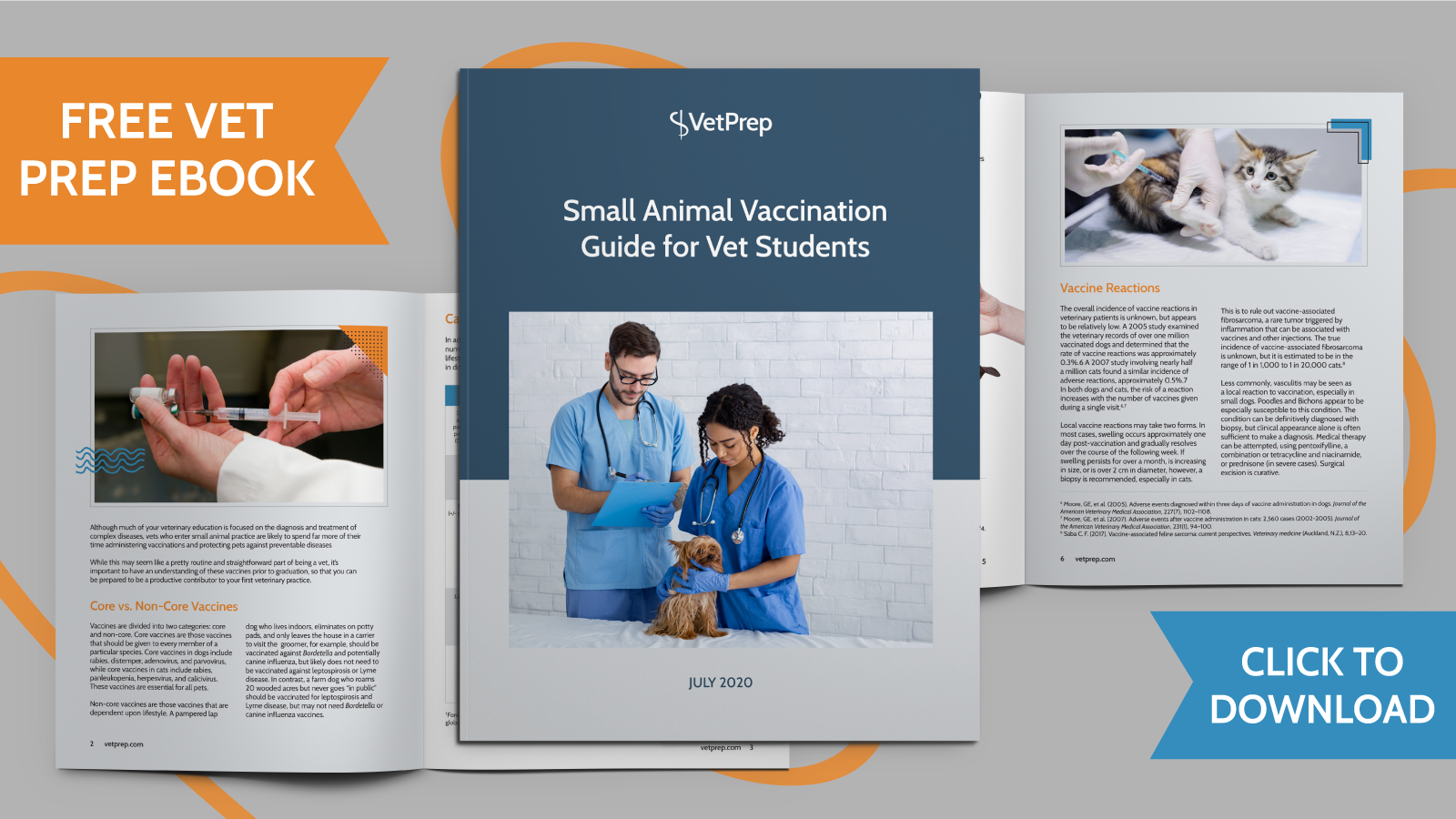
Although many food animal producers administer their own vaccines and protocols can vary widely, depending on the location, herd, and the owner’s goals, it is still helpful to have a general understanding of what vaccines are recommended for each species.

Cattle (Beef and Dairy)
![]() Vaccination programs for cattle herds vary, depending on local disease prevalence and the setting. Recommended vaccinations in a cow-calf or feedlot setting often differ from those recommended on a dairy farm. Also, like in small animals, some vaccines are recommended for all animals, while others are considered optional.
Vaccination programs for cattle herds vary, depending on local disease prevalence and the setting. Recommended vaccinations in a cow-calf or feedlot setting often differ from those recommended on a dairy farm. Also, like in small animals, some vaccines are recommended for all animals, while others are considered optional.
Common cattle vaccines include the following:
Infectious Bovine Rhinotracheitis-Bovine Viral Diarrhea-Parainfluenza Virus 3 (IBR-BVD-PI3): This combined vaccine protects against three separate pathogens, each of which poses a significant health threat. Both beef and dairy calves are typically vaccinated prior to weaning (two vaccines, 3-4 weeks apart) and this vaccine is repeated on an annual basis.
Bovine Respiratory Syncytial Virus (BRSV): This vaccine may be administered separately, or may be combined with the IBR-BVD-PI3 vaccine listed above. This vaccine is also recommended for both beef and dairy cattle, prior to weaning and then once annually thereafter.
Blackleg 7-way: This vaccine protects against Clostridium chauvoei, C. septicum, C. novyi, C. sordellii and C. perfringens Types C & D. It is recommended for beef and dairy calves prior to weaning (two vaccines, 3-6 weeks apart), and should be repeated on an annual basis.
Leptospirosis: In both beef and dairy calves, this vaccine is recommended prior to weaning and should be repeated annually (or as often as every 3 months in some high-risk areas). The leptospirosis vaccines vary in which serovars are included; most products protect against the serovars Pomona, Grippotyphosa, Canicola, Icterohaemorrhagiae, and Hardjo. This vaccine not only protects vaccinated cattle, but also limits the zoonotic risk to humans.
Rotavirus/Coronavirus: This vaccine is administered to pregnant dairy heifers to provide their calves with protection against calfhood diarrhea. It is typically administered 40-60 days prior to calving and again three weeks before calving.
Vibriosis (Campylobacteriosis): This vaccine is recommended on an annual basis in breeding beef and dairy cattle.
Brucellosis: This vaccine is recommended for all breeding heifers prior to breeding, whether they are in a beef or dairy operation.
Commonly-utilized optional vaccines in beef and dairy cattle, which are given based on geographic location and the herd’s individual risk assessment, include:
-
- Anthrax
- Anaplasmosis
- E. coli
- Haemophilus somnus
- Trichomoniasis
- Pasteurella
- Pinkeye or Infectious Bovine Keratoconjunctivitis (Moraxella bovis)
- Rabies
Sheep
There are only two vaccines that are recommended for all sheep. These vaccines are given to both large commercial herds as well as small herds of companion animals.
Clostridium perfringens Types C&D/Tetanus: Lambs should receive two vaccines 3-4 weeks apart, beginning at 5-6 weeks of age. This vaccine should then be repeated on an annual basis. Some vaccines also include protection against additional clostridial diseases, if risk factors are present.
Rabies: There are several rabies vaccines that are labeled for use in sheep. These vaccines are typically administered annually, although manufacturer labeling should be followed.
Other vaccines, which may be utilized by large-scale operations with particular concerns or a history of certain infections, include:
- Brucellosis
- Caseous lymphadenitis
- E. coli
- Enzootic abortion of ewes
- Footrot
- IBR-PI3
- Leptospirosis
- Pneumonia (Pasteurella/Mannheimia)
- Rotavirus
- Vibriosis
Goats
Like sheep, goats have two recommended vaccines. There are other vaccines that may be given, depending on risk, but the basic recommended vaccines for goats are identical to those recommended for sheep.
Clostridium perfringens Types C&D/Tetanus: Kids should receive two vaccines 3-4 weeks apart, beginning at 5-6 weeks of age, and then be vaccinated annually. Vaccines with protection against additional clostridial diseases are also available.
Rabies: Although rabies vaccines are used off-label in goats, they are routinely recommended due to frequent goat/human interactions and the zoonotic risk of rabies. Rabies vaccines in goats are typically administered annually.
Other vaccines, which may be given depending on risk, include:
- Caseous lymphadenitis
- Chlamydia
- Orf
- Pigeon fever
- Pneumonia (Pasteurella/Mannheimia)
Summary

While a large number of vaccines are available for ruminant patients, it is important to perform an individual risk assessment for each herd. While the terms “core” and “non-core” vaccines are not typically used in ruminants, like they are in small animals, the basic concept is the same. Some vaccines are recommended for all animals of a given species, while others are given only if specific risk factors are present that suggest the need for those vaccines.



